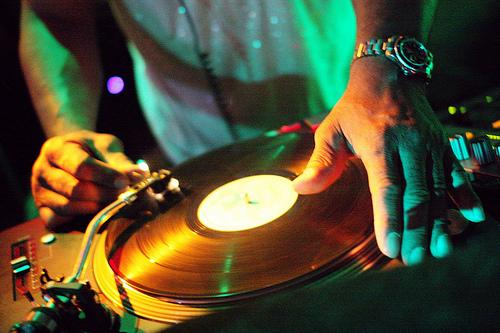If you’re not a familiar fan of hip hop music, in the famous words of The Game, “get familiar.”
When it comes to Hip Hop and Rap music, I would certainly consider myself an enthusiast. I guess I have DJ Kool Herc to thank for that — and if you don’t know who that is, he’s generally considered the father of Hip Hop. Of course, Hip Hop has come a long way since 1973 (the year “disco funk” evolved into what we know as Hip Hop).
Clive Campbell — known as Kool Herc — was a DJ in the Bronx during the early 1970s; he was an immigrant from Kingston, Jamaica. While Campbell DJ’d, he made announcements and exhortations to dancers. This lead to the syncopated rhyming we know as rapping. He would often refer to his dancers as “break-boys” and “break-girls.”
This style of DJ was quickly adopted by Afrika Bambaataa and Grandmaster Flash. Unlike them, DJ Kool Herc never made the move into commercially recorded (radio) hip hop in its earliest years.
As the culture of hip hop as a whole developed, so did techniques in rapping, or MCing. During the birth years of rap, DJs and MCs would add call and response chants over their funk beats (you may be familiar with “Be Faithful” by Fatman Scoop, you know, “you gotta hundred dollar bill put ya hands up!”).
It’s important to realize though, that this wasn’t only the birth of hip hop music, but of the hip hop subculture as well. Hip hop has opened the door to so many sub-genres of this subculture, for example, rap, beatboxing, G-funk, turntablism, and various forms of hip hop.
Some common sub-genres of hip hop are gangsta rap, freestyle rap, old school, trap music, and the rapidly growing, conscious or “socially conscious” hip hop sub-genre. Some more unconventional hip hop sub-genres include political hip hop, Christian hip hop, nerdcore, homo hop, and instrumental hip hop (hip hop without vocals, commonly used in amateur freestyle rap).
Hip hop, like many evolving cultures, came in waves. The first wave of hip hop was the birth years, the early 1980s — this is when Afrika Bambaataa and Grandmaster Flash dominated the hip hop world.
The second wave was New School hip hop, known as the Golden Age (or Golden Era) of hip hop. This occurred between the mid-1980s and early 1990s and was said to be characterized by its quality, diversity, innovation, and influence. The Golden Age is noted for its innovaton; Rolling Stone refers to it as a time “when it seemed that every new single reinvented the genre.”
Another wave that occurred during the Golden Age was Gangsta rap and West Coast hip hop. Gangsta rap is a subgenre of hip hop where violence, drugs, and illicit activity is the subject — making it a clear target for controversy. Ice-T, who gave a speech at our school last spring, was one of the earliest gangsta rappers.
The rap group N.W.A., consisting of the Arabian Prince, DJ Yella, Dr. Dre, Easy E, and Ice Cube, was also very popular in the era of gangsta rap. Due to the influence of Ice-T and N.W.A, gangsta rap is often viewed as an originally West Coast phenomenon, despite the contributions of East Coast acts like Boogie Down Productions in shaping the genre. And despite one of Ice-T’s most controversial hits “Cop Killer,” he’s played a New York City detective on “Law and Order: Special Victim Units” for the past 15 years.
Aural Pleasure: The Birth of Hip Hop
February 18, 2014

The Birth of Hip Hop




















































